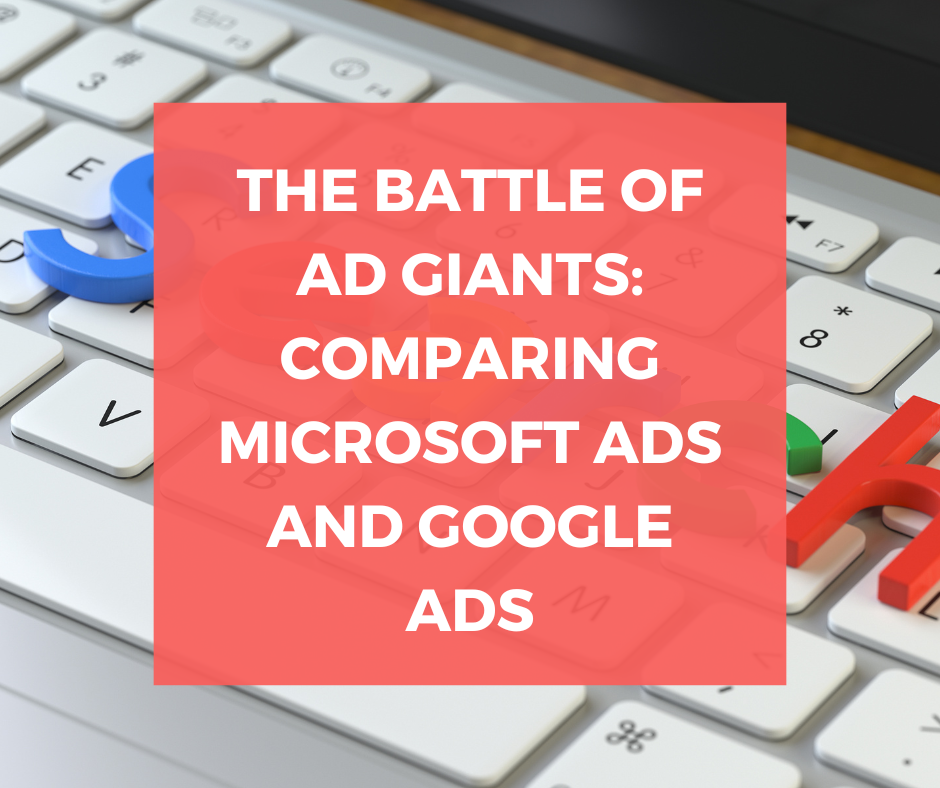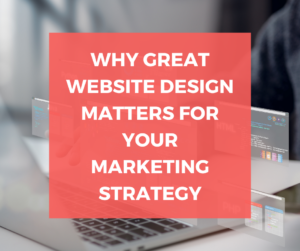
Spring Cleaning for Your Website: How to Refresh Your Online Presence
Spring is a season of renewal, making it the perfect time to refresh not just your home, but also your

When it comes to online advertising, Microsoft Ads and Google Ads stand as the titans of the industry, each offering unique features, capabilities, and advantages to marketers. Understanding the strengths and weaknesses of these two platforms can help businesses optimize their ad spend and reach their target audience more effectively. In this blog, we’ll delve into the key differences between Microsoft Ads and Google Ads, exploring aspects such as audience reach, targeting options, cost efficiency, ad formats, and overall user experience.
Google Ads, being the larger of the two, boasts an extensive audience. With billions of searches conducted daily on Google, advertisers can access a large pool of potential customers. This vast reach includes not only search results but also the Google Display Network, which encompasses millions of websites, videos, and apps where ads can be displayed.
Microsoft Ads, on the other hand, may not reach as many individuals as Google, but its integration with Bing—the default search engine for Windows devices—grants it access to a valuable demographic. Users of Microsoft products tend to be older and more affluent, making them an attractive audience for certain advertisers. Additionally, Microsoft Ads serve ads not just on Bing but also on partner networks, including Yahoo and AOL, thereby expanding its reach within specific market segments.
Both platforms offer various targeting options to help advertisers refine their audience. Google Ads provides robust targeting capabilities, including keyword targeting, demographic targeting, geographic targeting, and even custom audiences based on user behavior. Google’s advanced machine learning algorithms further enhance the targeting process, allowing advertisers to reach users based on their intent and interests.
Microsoft Ads also offers solid targeting features, although there are some differences. For instance, Microsoft Ads allows advertisers to target specific audiences based on LinkedIn profiles, which can be particularly advantageous for B2B marketers. The platform provides similar keyword and demographic targeting options as Google Ads but with sometimes less granularity. It’s essential for marketers to evaluate which targeting features align best with their campaign goals, as the effectiveness of these options can differ based on the target audience.
Cost is a significant factor for advertisers when selecting an ad platform. Typically, Microsoft Ads can offer a lower cost-per-click (CPC) compared to Google Ads. This can be attributed to the generally less competitive bidding environment on the Microsoft platform, particularly for certain industries. Advertisers who may be priced out of Google’s more competitive landscape might find value in Microsoft’s offerings.
Moreover, since Microsoft Ads allows for bid adjustments based on device, time of day, and other criteria, marketers can maintain control over their budget while optimizing performance. On the flip side, Google Ads tends to have a larger range of pricing complexity, with some keywords commanding high CPCs due to competition. While Google might necessitate a more considerable investment, its scope can yield higher returns if executed correctly.
Both Microsoft Ads and Google Ads feature a variety of ad formats, giving advertisers multiple options for presenting their products and services. Google Ads is renowned for its diverse range of formats, including text ads, responsive ads, shopping ads, video ads, and more. This versatility allows marketers to experiment with different creative approaches and adjustments to suit their audience’s preferences.
Microsoft Ads offers text ads and shopping ads similar to Google, but also includes unique formats, such as audience ads that leverage LinkedIn user data. These audience-targeted ads can assist brands looking to engage with specific professional segments, providing a distinctive avenue for B2B advertising.
The difference in available ad formats can lead to varying creative strategies across the two platforms. Evaluating which formats resonate with your target audience is crucial in determining which platform is better suited for your campaigns.
The user interface and customer support offered by Microsoft Ads and Google Ads can significantly influence an advertiser’s experience. Google Ads has built a reputation for its comprehensive interface, boasting advanced tools and functions, although this can sometimes be overwhelming for new users. Google provides extensive resources, tutorials, and community forums to support advertisers in navigating its complex ecosystem.
In contrast, Microsoft Ads presents a more straightforward user interface, making it easier for newcomers to understand and utilize its features. Microsoft has invested in improving its user experience by offering insights and recommendations to enhance campaign performance. However, it may not have as broad a knowledge base as Google Ads, which can affect those looking for in-depth troubleshooting or advanced techniques.
Choosing between Microsoft Ads and Google Ads ultimately depends on the specific goals and needs of the business. Each platform has its merits, from Google’s extensive reach and advanced targeting options to Microsoft’s cost efficiency and unique audience insights. Advertisers should consider factors such as their target demographic, budget, and advertising objectives when determining the best path forward.
By conducting thorough research and perhaps running test campaigns on both platforms, businesses can glean vital insights into which advertising avenue aligns best with their overall marketing strategy. In the ever-evolving digital marketing landscape, staying informed about the strengths and weaknesses of advertising giants is crucial for success. Whether leveraging Google’s expansive network or tapping into Microsoft’s targeted approach, the battle of the ad giants offers opportunities for marketers willing to explore and innovate.
Ready to elevate your advertising strategy? Contact Omnisence Digital today to discover how we can help you harness the power of both Microsoft Ads and Google Ads to achieve your marketing goals. Let’s drive your success together!

Spring is a season of renewal, making it the perfect time to refresh not just your home, but also your

If you’ve ever posted something on social media only to see minimal engagement, you might wonder why some content thrives

Your website is your business’s digital front door. It’s often the first impression your potential customers will have of your
OmniSence Digital
109 Rice St. S
Jordan, Minnesota 55352